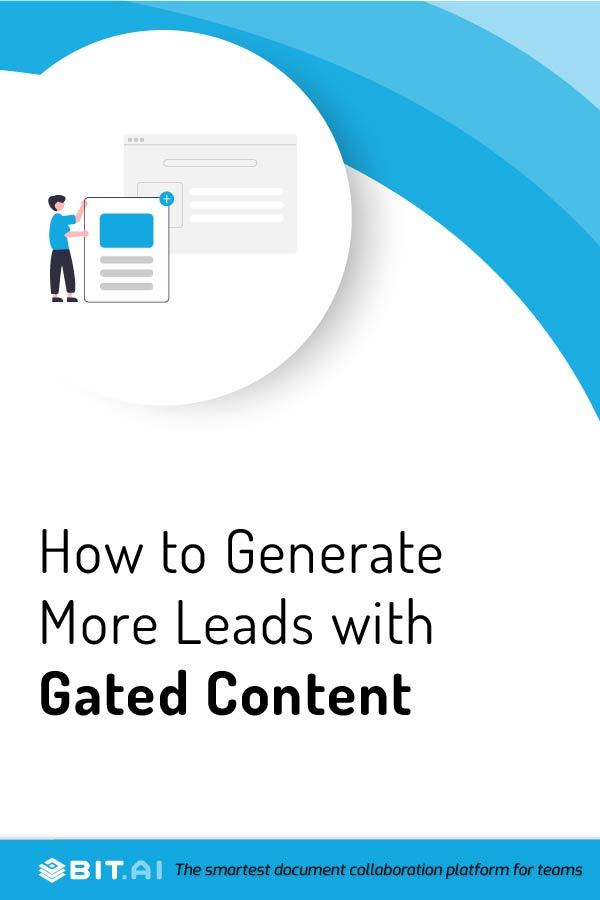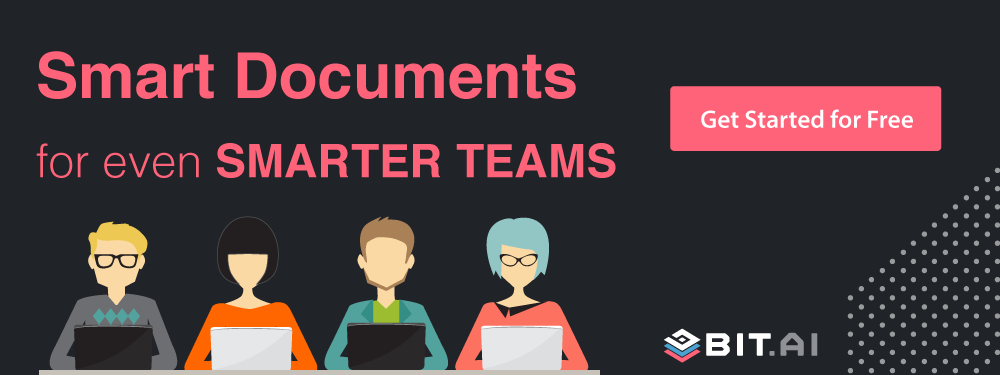Have you ever clicked an article you wanted to read, and a few seconds into reading, a message pops up asking you to enter your email address if you wish to continue reading? Yes, we’ve been there too!
As annoying as it may sound, that is a marketing strategy and an effective one! Because as you read the content, you will realize it is valuable, interesting, and relevant to what you were searching for. This makes you want to read it, and that’s where they get you.
Sure, they’re not asking you to pay money, but they are asking you for your contact information. This marketing technique will ensure high-quality leads are drawn into and sign up for the content. And this type of content is called gated content.
Worry not if you’re clueless about gated content; this blog is for you. Here, we will provide the meaning, examples, and best practices for gated content. So what are you waiting for? Dive right in!
What is Gated Content?
Gated content is any type visitors or viewers can access only after giving out their information. This is usually done through a lead capture form through which you provide your contact details and other information before being granted access to the content.
Essentially, the content is hidden or gated from the public, hence the name gated content. This type of content is usually long-form and informative.
Now you might be wondering why companies exactly do this. What’s the point of making prospects go through the extra effort to gain access to information which could have been offered for free?
We got two words for you – lead generation. It is central to content marketing. Most companies want to maintain a steady flow of leads coming in their direction so that they can foster and build relationships with them to convert them into loyal customers.
And with gated content, you can easily achieve this when your company gets something tangible like an email address or contact number of the potential leads.
Now that you know a little about gated content, let’s look at the several examples of gated content we see around us.
Examples of Gated Content
1. Webinars
A webinar is an online seminar that is hosted by an organization to present content to a group of select individuals. And the fact is that nearly 70% of the webinars are focused on increasing sales and engagement. This makes them an excellent medium for gated content for lead generation. Webinars can be pre-recorded or live, and you can use webinar software to present your content easily. It lets you answer questions during the sessions and even allows you to give a strong call to action at the end of it.
2. ebooks
Ebooks are electronic versions of printed books and are a very popular way to present gated content. You can create workbooks, guides, PDFs, etc., that offer specific information directed at specific audiences. This will prompt people to download or try to access the ebook, making it an incredible way to capture high-quality leads.
3. Email Series
An email series is a set of emails you space out and send to people over a specific period. This is a great way to use gated content. The main aim of creating an ebook is to exchange information with contact information and turn them into leads. So you can offer email content as a class or course over a set amount of time. You can do this by emailing once a day or per week to provide information or content. This way, you can break down complex topics into an easily digestible format that people will want to consume.
4. White Papers
A white paper is an informational document or a guide that often contains information addressing an issue and how to solve them. Since it aims at educating readers and helping them make decisions, it is an excellent form of gated content that can help generate leads. This is particularly true if your white paper contains new and innovative industry research or expert tips from well-known professionals. Not to mention, white papers are a great way to demonstrate your authority in the industry and boost your reputation.
Read On: White Paper: What is it & How to Write it?
5. Product Demos
A product demo is a sales strategy that demonstrates or highlights the value of a product to potential customers. Often these are done by SaaS companies. Using product demos as gated content is a powerful way to offer information, familiarise people with your product, and convert them into a lead or a customer. You can do this by offering a live demo or letting people take a test drive or trial of your product for a certain amount of time in exchange for their contact information, such as email address or phone number.
6. Quiz Results
Most people love taking online polls and quizzes, whether it is a simple ‘Which Hogwarts house do you belong to?’ or a ‘Myers Briggs personality test‘ or a career aptitude test. But often, you’ll see that at the end of these tests, you might be requested to give your email IDs to see your results. This is a popular example of gated content. Quizzes and surveys also allow you to gather demographic details of the participants and use that to segment them. This will help you offer them content according to their needs and preferences.
7. Online Courses

From basic guitar lessons to advanced coding, there is an online course for everything nowadays, and there’s no denying that they are increasingly becoming a common learning method. That’s why websites like Udemy, Coursera, Upwork, etc., have many users. More often than not, these online courses are great examples of gated content, whether they are free or paid. By providing these courses, you can establish yourself as an industry expert and gain the trust of your customers as well.
8. Templates
A template is a sample, pre-formatted document with details already on it that make it easy for you to create your document. Think resumes, research proposals, business emails, and more. And these templates are excellent examples of gated content, particularly in the design industry. Offering free templates in exchange for email addresses is a great way to give prospects a taste of your style and help you generate more leads in the future.
Now that you know some of the most commonly used examples of gated content, you might want to check out some of the best practices you can follow if you wish to create or offer gated content
Best Practices of Gated Content
1. Start by Creating Content
Consumers these days are highly aware and informed. Hence they go through what is called a buyer’s journey (a buyer’s path to purchase) before making a purchase. In this process, they undergo three stages – awareness, consideration, and decision.
When consumers go through these phases, they must have the right information and content to guide them to make the right choices. For this, you must create content and provide them with enough data and information during each phase to make the right decision.
For example, a prospect in the awareness stage might only be interested in reading through blogs or ebooks. Meanwhile, a prospect in the consideration stage might look at customer reviews or signup for email series. On the other hand, a prospect in the decision stage might need a webinar or product demo.
So one of the best practices for gated content is to create carefully designed content for each stage of the buyer’s journey
Read More: Buyer’s Journey: What is it & it’s 4 Key Stages You Must Know!
2. Analyze Your Competitors
Competition is everywhere, and you must analyze it before creating gated content for your company. So once the brainstorming session for content ideas for each buyer’s journey stage is done, you need to carry out a competitive analysis.
When conducting a competitive analysis, you must research your competitors’ actions. This means that you find out what kind of content they are churning out and what they choose to keep gated and ungated. This gives you a rough idea of what content you must create and keep gated.
3. Provide Incentives
Remember that no one wants to try to type in their contact information only to find out that the content they signed up for doesn’t provide any value to them. After all, offering value is one of the most crucial aspects of marketing.
For this reason, your gated content must provide some actionable and valuable content. Most importantly, it should also be relevant to your audience – because who would want unrelated content in the first place?
When you offer real incentives like value and relevance, your audience will be naturally inclined to fill out the forms and give their contact information to you.
4. Create a Strong Landing Page
The call to action for your content offer often results in your prospects ending up on the landing page of your website. So if you’re planning to create gated content, one of the crucial practices you need to follow is to ensure that you have a strong landing page.
A strong landing page is all about removing distractions and earning your visitor’s attention in the best way possible. You must create a powerful and eye-catching headline, an interesting and witty copy, and a compelling form.
5. Segment Your Audience
Hurray, so you finally have a bunch of leads that have downloaded your gated content! This essentially means that you have their email addresses in hand. So now comes the crucial part – segmenting your email lists.
You can segment your email lists based on demographics such as age, gender, etc., or preferences or needs. By doing this, you will be able to create email marketing campaigns that are targeted and effective. It will also allow you to send emails that will help convert leads into customers who trust you.
6. Track and Measure the Analytics
 Like any other marketing technique, you must analyze, review, and measure the success of your gated content and its practice. For this, you need to keep track of your analytics and measure them to determine whether they are making an impact. Doing this will help you understand your audience, how your content is perceived, and the different ways to improve your strategies.
Like any other marketing technique, you must analyze, review, and measure the success of your gated content and its practice. For this, you need to keep track of your analytics and measure them to determine whether they are making an impact. Doing this will help you understand your audience, how your content is perceived, and the different ways to improve your strategies.
Wrap Up
Whether you have a small or a big business, gated content plays a huge role in the initial stages of the customer journey on your website.
So if lead generation is your target, then gated content must be a pivotal part of your content marketing strategies. But it must be approached carefully.
Before jumping onto the gated content bandwagon, ask yourself what you want from your audience and whether you have done enough to earn that in exchange for your content.
Remember to be thoughtful and produce content that is worth signing up for! Good luck, folks!
Keep Reading, Reading, Reading! 👩🏫🧠
Growth Marketing: What is it & How to Carry it out for your Business?
Best Content Creation Software: Attract Your Target Audience with Ease
27 Content Creation Tools Every Marketer Needs! (Category Wise)
11 Amazing Sales Promotion Examples for Your Product!
How To Create Sales Content Assets For More Leads?
15 Sales Tactics to Generate High-Quality Leads!
Dynamic Content: What is it & What are the Ways to Use it?



